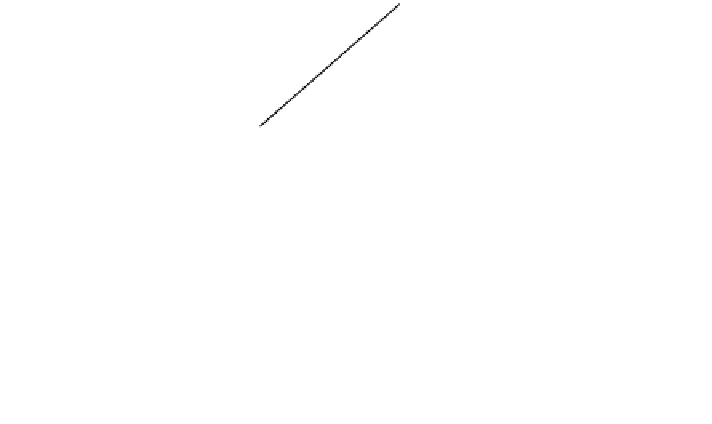Geoscience Reference
In-Depth Information
due to this factor. The fore most step for managing the slope, soil and water is the
plastering of the drain for not to allow easy percolation along the hill side. The
runoff from the hill sides is easily concentrated along the drain at the junction with
road and makes its journey as through flow under the road saturating the underlying
materials. The water when emerges out at the outer margin may develop a channel
and thus in due course, by head ward extension, starts damaging the road. Once
created such landslide scars keep on increasing at a faster rate until the road is
completely wiped out.
8.3.2 Jhora Training
Considering huge discharge, laden with high amount of abrasive tools and conse-
quent basal scour and erosion during monsoon the Jhora Training seems to be
important to save the slope from failure. The technique of jhora training includes
the construction of Guide Walls along the side banks in descending steps, gabion
drops and guide structures. Slope along the jhora bed is to be broken into gabion
drops like small steps (Fig.
8.2
).
The torrential water which flows down slope with huge velocity is interrupted
with breaks of slope and water is allowed to fall from restricted height (over fall)
and thus the erosive power of flowing water can be restricted (Figs.
8.3
,
8.4
and
8.5
). The cemented course will not allow water to in
ltrate inside in the sinking
areas mainly. All the jhoras along the Hill Cart Road has to be managed at the
junction point with hill Cart Road and Narrow Gauge Rail Line. The length of the
riser and height of the heads are to be
fixed by analyzing the gradient along the long
pro
le of the concerned jhora and the stability of the materials in response to the
Fig. 8.2 A design of jhora
training
Channel Bed
Head
Drop Structure
Guide Wall
Over Fall
Earth or Boulder Fill







































Search WWH ::

Custom Search